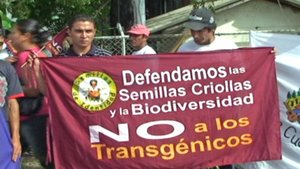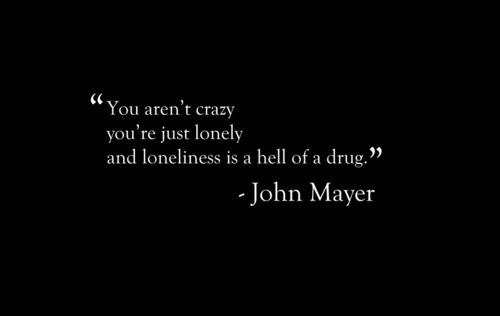
TDIV: Since
you couldn’t have known the outcome of your journey in advance, what
was it that made you decide to film your progress from the beginning?
Cross:
There were probably two main thought processes that brought that
around. Number one was that I felt that if I put a camera on myself, it
would help me actually do it. It was kind of like my community support
system. Since I’d gone out and said to everyone, “Hey world, I’m going
to do this,” I’d better do it. It was like a carrot and stick
scenario. The other thing was that if this worked, I’d love to capture
it because it might be able to help inspire and educate others. That
made me want to go through with it because I didn’t think that I was the
only person in the world who was fat, sick and nearly dead at that
time.
TDIV: There
always has to be a spark on a journey like this, something that makes
you want to follow through. But you were diagnosed 9 years before you
made the film. What was it that made you say, “This time, I’m going to
do it?”
Cross:
I think I just got fed up with outsourcing my health to other people
and putting the responsibility in the hands of others, paying them and
not getting results. In my mind, I needed a total radical solution,
something that no one had recommended. If you’re in the predicament,
personally, of having a hundred pounds of extra weight, I call it
energy, in your body…plus you’re taking pills night and day just to get
through that night and day…and one foot in the grave and you’re only
forty years of age, you start to put in perspective who important things
are in your life. Breathing and staying alive are probably the most
important. I looked at the fact that I was in a catastrophic
predicament. I needed something just as catastrophic to do the job.
Then I wanted to find a happy medium.
TDIV: In
the film we see you struggle a little in the very beginning, the first
few days you said you wanted to stay in bed. Did you have bad days
after that?
Cross:
No. If you define bad days as physically bad days, then no. After the
initial break and…I don’t like using the word ‘detox,' I think that
withdrawal is a better term to use, the initial withdrawals ceased
after 4 or 5 days. Now was I bored some days in the future? Yes. Were
there days when I wanted to go out and murder a hamburger? Absolutely.
But that’s not really a bad day or a bad moment, that’s just wanting
something and not being able to have it. There were never days where I
felt bad or was stricken to my bed, curled up in the fetal position
because I was in so much pain, no.
TDIV: What kind of diet do you follow now?
Cross:
I don’t think my diet would be considered outside of the mainstream of
what we should be eating. I’m not vegan or vegetarian or living on any
crazy, you know, bird feed. It’s a rare thing for me to have red meat. I
eat bread every now and then, not a lot but if I’ve been exercising,
then I’ll have some bread. But the big difference for me is that I eat a
lot more fruits and veg now. So I make it a mission every day to
consume more fruit and vegetables than I ever did before. It has become
quite natural to me. I’ll have two or three juices a day, I’ll eat lots
of salad, I’ll eat veg. I’ll still have desserts. I’ll still have the
odd brownie when it feels right, but I won’t have one every morning for
breakfast. It’s a shift from where only 4 or 5 percent of my caloric
intake was from plant food to now where I try to make it 30-40%.
TDIV: Besides overall better health, what is the best part of your new lifestyle?
Cross:
I think the best part is getting rid of the addiction. I was a slave
to sugar. I would get up in the morning and drink a coke, then half an
hour later I would have another one. If I didn’t have any, I would get
in the car and drive straight for a store. It had full control over
me…I don’t drink alcohol or smoke cigarettes…I don’t drink coffee.
TDIV: Are still free of medication?
Cross:
Yes. If you had interviewed me last week, I would have said that I
hadn’t taken any medications in 5 years. But last week I went to a
dentist and was prescribed antibiotics. I argued with him but he said
it was too big a risk. So I took his advice and took the medication.
TDIV: I just saw you in the trailer for Hunger for Change. Can you talk a little about how you’ve become a healthy eating celebrity after your film?
Cross:
I think the reason why people relate to me is because I keep it real
and I’m not a fanatic. And I will fall off the rails. There are times
when I will have too much sugar. It’s one of those things where I’m in a
very fortunate position to be able to talk to people, to be able to
share my story, to be able listen, meet some really interesting people
and learn more and in turn share back. So the fact that 3 million
people have watched the movie means that there is an audience that would
be interested in watching more content about this subject. I’m excited
by that. Instead of being the character, like I was in the first film, I
can try to shift into the role of host. I can try and share
information that I learned, that the audience can learn. I think
there’s a big wave coming of awareness in people who are interested in
the food supply system in the world of nutrition. It gets me excited
that I can be a part of that.
TDIV: Are you going to be making more films?
Cross:
I don’t think I would use the word films just yet…I am generating
content that can be consumed in 30 minutes or 40 minutes and is episodic
about certain things that relate to the world of nutrition. But that
doesn’t mean I won’t make more films but I want to have an idea that
hasn’t been done before.
TDIV: Will these pieces be available online?
Cross:
Absolutely. I definitely feel that’s where they would belong, but I
would like to try to get some television exposure with them as well. If
we make them interesting enough, then you never know, the BBC,
Discovery Channel, Food Network, whatever, may be interested in picking
up a series. But we aren’t specifically making them for television.
I’m making it for the community that I’m creating and trying to nurture.
TDIV: In the video message you left for the audience at The Seed, you said that you were working on getting Fat, Sick and Nearly Dead into other markets?
Cross: Yes,
we are going to be launching the movie into foreign markets by digital
release. We are looking at getting the film into, hopefully, 50
countries…in over twenty languages. We are planning on making that
happen in the northern Spring of next year.
TDIV: Do you still keep in touch with Phil?
Cross:
Oh, yes. I speak to Phil at least once a month and we email back and
forth 3 or 4 times a month. He’s doing great. I sponsored him this
year into a nutrition course. He’s becoming a health coach.
https://www.youtube.com/watch?v=tB-SlAHCSFA&playnext=1&list=PLA02C892DF2D2AE4A













